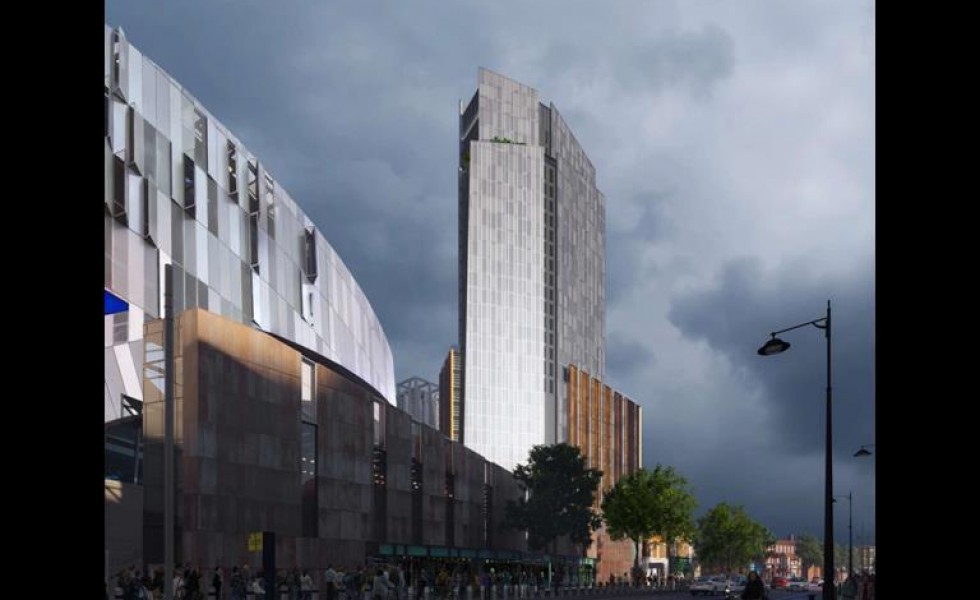Spurs submits plans to boost height of hotel tower next to stadium
29/9/23
Tottenham Hotspur FC has submitted plans to increase the height of a consented but unbuilt hotel tower next to its north London stadium.
The changes, lodged with Haringey council last month, would see the 23-storey building bumped up to 29 storeys and its floorspace increased by nearly 40%.
The rejig would see the approved scheme's 19,000sq m of space increased to 23,400sq m, with around 16,000sq m being taken up by the hotel and 11,300 sq m left for housing.
The club, which is currently second place in the premier league despite losing its star striker, Harry Kane, to Bayern Munich last month, is also proposing significant changes to the F3 Architects-designed building's form and layout, including facade materials.
The project team includes planning consultant Quod, hotel designer Studio Moren, landscape architect and transport consultant Arup, QS Arcadis, fire engineer OFR, principal designer IM2 and Buro Happold on a range of engineering roles.
The amendments come eight years after the proposals were originally approved as part of the club's wider plan to redevelop its White Hart Lane stadium.
Its much larger 63,000-seat replacement, designed by Populous and completed by Mace in 2019, is the largest club ground in London and the third largest in the UK.
The substructure of the hotel and superstructure up to the podium level were completed in 2019, but the site has been dormant for more than four years.
The scheme also included four residential towers next to the hotel containing 585 homes and an extreme sports building, both of which are unbuilt, along with a now completed pair of low-rise blocks containing a club shop, museum and cafe.
Spurs is also planning to build a further three residential towers to the north of the stadium but has been hit by a number of delays.
The trio of 32, 29 and 27 storeys blocks, which would contain around 850 homes, were rejected by Harinegy council in 2021 before being approved on appeal 10 months later.
The scheme, also designed by F3 Architects, was then sent back into planning in July to add second stair cores after London mayor Sadiq Khan ruled that all residential buildings above 30m in height needed additional means of escape in the event of a fire.
Source: Building.co.uk

